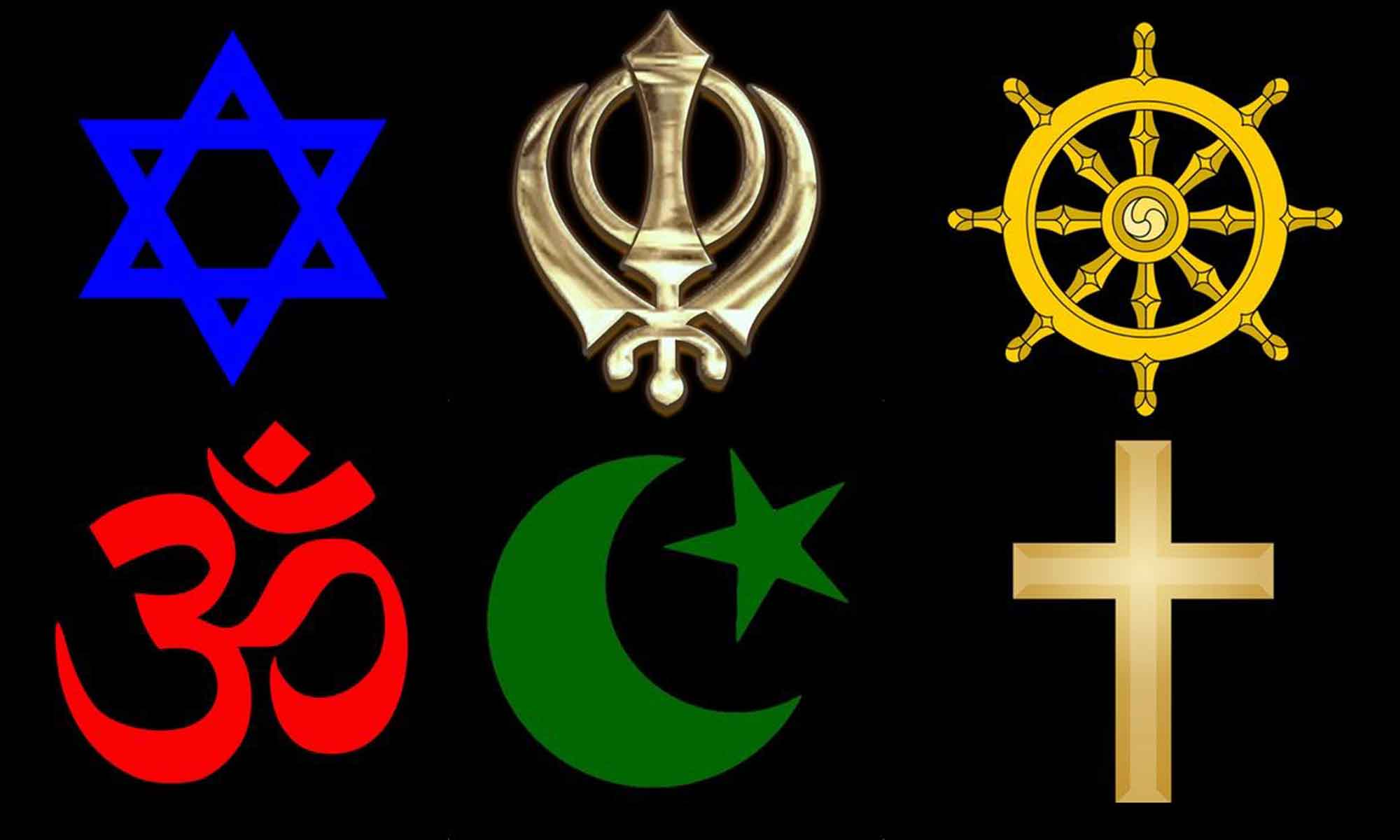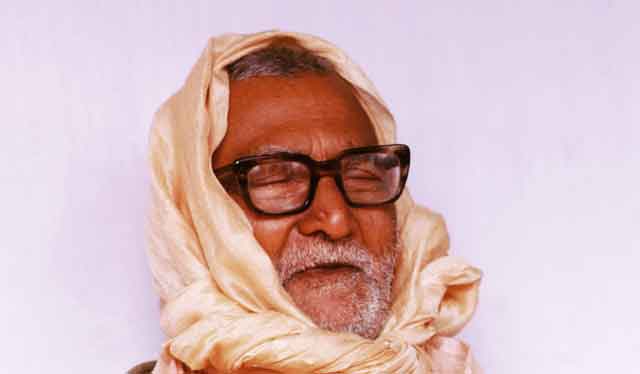Overview
“Real Religion is not Man-made” was written by Swami B.G. Narasingha on September 8th 2006. Narasingha Maharaja discusses the concepts of śraddhā and śaraṇāgati in relation to Vaiṣṇavism and other world religions.
During a recent visit to Europe I had some informal discussions about religious conceptions with other Gauḍīya Vaiṣṇavas and I was surprised to hear some devotees speak about such groups as the Sufis, Whirling Dervishes, Jews, Christians, Catholics, Orthodox Christians and Muslims as being deeply ‘surrendered’ souls. Of course, generally speaking this may be true – but surrendered to what? I would like to point out in this article that śraddhā (faith), śaraṇāgati (surrender) and sevā (service) are spiritual substances and activities that are only transcendental when in direct connection to Kṛṣṇa and that the popular religions of today’s world are but the continuation of a Vedic heresy that began long, long ago in ancient times.
The first point is that dharma (real religion) is given by God himself – dharmaṁ tu sākṣād bhagavat–praṇītam. Real religion is not man-made. Dharma is the knowledge and activities of the intrinsic relationship that exists between Kṛṣṇa and all living entities eternally. This is sometimes called sanātana-dharma, eternal religious principles. In a word sanātana-dharma has been summed up as sevā, or the living entities relationship of service to the Supreme Being. Therefore, so-called service to various deities or to icons that are conjured by man can never be considered sevā in the true sense of the word.
Bhaktisiddhānta Sarasvatī Ṭhākura once commented on the situation of spirituality in India that, “At present many false meanings have been imported into the word devotion. Regard for one’s parents, loyalty to man, obedience to the teacher, etc, pass as bhakti.” (Sarasvatī Ṭhākura, lecture, Vṛndāvana 1928)
In a similar way one can say about western spirituality that all sorts of misconceptions and innovations have also been passed off as spiritual practices, devotion, service, love of God, etc, when in fact they are not.
In Sanskrit the root word bhaj means to serve. Bhaktivinoda Ṭhākura has pointed out by quoting the Garuḍa Purāṇa in Bhakti-Tattva-Viveka, Ch.1 as follows:
“The word bhakti is derived from the root verb form bhaj. It is said in the Garuḍa Purāṇa (Pūrva–khaṇḍa 231.3):
bhaj ityesa vai dhātuḥ sevāyāṁ parikīrtitaḥ
tasmāt sevā budhaiḥ proktā bhaktiḥ sādhana-bhūyasī
“The verbal root bhaj means to render service. Therefore, thoughtful sādhakas should engage in the service of śrī Kṛṣṇa with great endeavour, for it is only by such service that bhakti is born.”
The basis of dharma is rooted in transcendental knowledge of the soul (ātmā), the Supersoul (Paramātmā) and the Personality of Godhead (Bhagavān). In reality no such knowledge of the soul, the Supersoul or the Personality of Godhead exists in the world’s popular mundane religions. Therefore, intelligent human beings do not accept the popular mundane religions as transcendental.
Referring to the scriptures of the world’s religions in the west, Sarasvatī Ṭhākura commented as follows:
“Senselessly killing living beings simply for the purpose of pleasure is fundamental to all these religions. Unlike the transcendental words of the Vedas, none of these paths are eternal. Therefore, one who deliberates upon these scriptures will naturally develop doubt about them since they lack a solid foundation.” (Sarasvatī Ṭhākura, purport, Cc. Ādi 17.169)
Additionally, śraddhā and śaraṇāgati (faith and surrender) presupposes sevā. First surrender, then serve: tad viddhi praṇipātena paripraśnena sevayā. This surrender means far more than one’s strict obedience to a master or teacher of a particular technique or thought. Surrender means, complete obedience to the will of Kṛṣṇa and not to that of anything else. First surrender (praṇipātena) then serving mood (sevayā) manifests. And to surrender one must have faith, śraddhā.
If one believes in a particular conception or philosophy that is not a bona-fide siddhānta, or an axiomatic truth regarding the Absolute Truth, then according to śāstra (laws and by-laws of dharma) such so-called belief is only a temporary state of mind fabricated under the modes of material nature. Such a mental belief system is not to be confused with śraddhā.
Real śraddhā is not a state of mind influenced by the modes of nature. Śraddhā is an influence over the heart that confirms to the living entity the path of devotional service, kṛṣṇa-bhakti. Bhaktivinoda Ṭhākura has written the following in this regard in his Mahāprabhura Śikṣā, Ch. 10:
The definition of śraddhā is this:
śraddhā śabde viśvāsa kahe sudṛḍha niścaya
kṛṣṇe bhakti kaile sarva-karma kṛta haya
“By performing transcendental loving service to Kṛṣṇa, one automatically performs all secondary activities. This confident, firm faith, that is favourable to the execution of devotional service is known as śraddhā.” (Cc. Madhya 22.62)
To have firm conviction that devotion to Kṛṣṇa is the only means for the living entity, and that performance of karma and jñāna devoid of bhakti are useless. Such a favourable inclination of the heart is called śraddhā.
Śraddhā is a purely spiritual illumination that emanates from the internal energy of Godhead, the hlādinī-śakti, Śraddhā Devī. This energy as it is, knows no Lord and master other than Kṛṣṇa and therefore śraddhā does not come to the living entities to reveal any lesser gods or masters. As Śrī Śrīdhara Mahārāja has said, “Śraddhā is the halo of Śrīmatī Rādhārāṇī and śaraṇāgati is the halo of Kṛṣṇa.”
Śraddhā reveals Kṛṣṇa (Viṣṇu) and no other. However, if one finds oneself following or appreciating man-made religions, such as those of the Abrahamic tradition, then this is due to one’s own misfortune and karma and not due to the guiding revelations of śraddhā.
In brief, śraddhā has been described by some of Gauḍīya Vaiṣṇava’s greatest ācāryas as the halo of Śrīmatī Rādhārāṇī and the firm conviction that by serving Kṛṣṇa all other purposes will be served.
The numerous so-called religions of the world that exist outside the Vedic system are not transcendental because they have no real connection to the Absolute Truth. Over time the proponents of these major world religions have done much harm to the world and deceived a multitude of people by engaging them in impious activities and all in the name of ‘good faith.’
If one deeply studies western theology and the history of religion one will discover that all contemporary religious thought has originated from the time of the Ṛg Vedic civilization. These religious thoughts however did not come to the world as wholesome theology but rather as a Vedic heresy. The first heresy of this kind was Zoroastrianism that gained a following in the western frontiers of the Ṛg Vedic civilization, namely in Iran, before the Ṛg Veda was written.
Zoroaster the founder of Zoroastrianism preached a doctrine of monotheism but he did not accept the monotheistic God (Viṣṇu) of the Vedas. Zoroaster instead put forward the worship of the Asuras (demons) and proposed Ahura (Asura) Mazda as the Supreme Deity. Zoroaster also created other anti-Vedic conceptions to embellish his new religion and Bhaktivinoda Ṭhākura explains them in Tattva-viveka:
“Zarathustra (Zoroaster) is a very ancient philosopher. When his philosophy found no honor in India, Zarathustra preached in Iran. It was by the influence of Zarathustra’s ideas that Satan, an equally powerful rival to God, made his imaginary appearance first in the religion of the Jews and then in the religion based on the Koran. Then, influenced by Zarathustra’s idea of two Gods, the idea of three gods, or a ‘Trinity’ made its appearance in the religion (Christianity) that had come from the Jewish religion.
“At first, three separate gods were concocted in the philosophy of Trinity. Later, learned scholars were no longer satisfied with this, so they made a compromise stating that these three concocted gods were God, the Holy Ghost, and Christ.” (Bhaktivinoda Ṭhākura, Tattva-viveka 1.21)
Several thousand years after Zoroaster, in approximately 500 BCE, the Persian Empire brought the Zoroastrian ideas of monotheism to Judea. In Judea the Jews abandoned their many pagan deities and adopted the idea of one God whom they called Yahweh, the tribal god of the Mountains or the god of Abraham. The idea that there is one Supreme God took hold in Judea but, as with the followers of Zoroaster, who the Supreme God was eluded them.
Prior to that time all Mediterranean cultures of the ancient world had been pagan in their beliefs. From monotheism, first being introduced into Judaism by the Persians, later Christianity developed and then Islam developed along those lines. But in no case was the nature, characteristics and personality of Godhead clearly known.
In some circles of western Vaiṣṇavas, ideas abound about personalities such as Jesus Christ being an incarnation of Lord Brahmā, Lord Balarāma or even Śrī Prabhupāda being an incarnation of Jesus. These ideas have no śāstrika basis and devotees should be cautious about accepting ideas and conclusions that are contrary to the opinions of previous ācāryas.
Thus, all the so-called religions west of the Indus River can rightfully be called a heresy, of a heresy, of a heresy of the Vedic religion. This continuous unfolding of man, adding to and subtracting from real religion, is a process that continues to the present day in the name of the Protestant Church and New Age Religions. Unfortunately, none of these said heresies represent the Supreme Godhead, or do anything except deceive the living entities about the ultimate goal of life.
Related Articles
- 📖 When Wise Men Speak Wise Men Listen by Swami B.G. Narasiṅgha Mahārāja (Book)
- Greater Than the Upaniṣads and the Vedas by Śrīla Bhakti Rakṣaka Śrīdhara Deva Gosvāmī
- Religiosity – Real and Apparent by Śrīla A.C. Bhaktivedānta Swami Prabhupāda
- Kṛṣṇa – The Supreme Vedāntist by Śrīla A.C. Bhaktivedānta Swami Prabhupāda
- Rational Vedānta by Śrīla Bhakti Gaurava Narasiṅgha Mahārāja
- Real Religion is not Man-made by Śrīla Bhakti Gaurava Narasiṅgha Mahārāja
- More on ‘Real Religion is Not Man Made’ by Śrīla Bhakti Gaurava Narasiṅgha Mahārāja
- More on Christianity: Only Kṛṣṇa Consciousness Can Enhance Kṛṣṇa Consciousness by Śrīla Bhakti Gaurava Narasiṅgha Mahārāja
- Jesus as a Perfect Christian by Śrīla Bhakti Gaurava Narasiṅgha Mahārāja
- Swastika and Cross by Śrīla Bhakti Gaurava Narasiṅgha Mahārāja
- Star of David or Star of Goloka? by Śrīla Bhakti Gaurava Narasiṅgha Mahārāja
- Does God Exist? by Śrīla Bhakti Gaurava Narasiṅgha Mahārāja
- Tad Viṣṇoḥ Paramaṁ Padaṁ by Śrīla Bhakti Gaurava Narasiṅgha Mahārāja
- Have the Vedas Advanced Civilization? by Śrīla Bhakti Gaurava Narasiṅgha Mahārāja
- The Position of The Bhāgavata Amongst Religious Scriptures by Śrīla Bhakti Gaurava Narasiṅgha Mahārāja
- Avatāras in Every Species by Śrīla Bhakti Gaurava Narasiṅgha Mahārāja
- The History of the Bhagavad-gītā by Swami B.V. Giri
- Jesus in the Vedas by Swami B.V. Giri
- The Great Flood – Are Manu and Noah the Same Person? by Kalki Dāsa
- Zarathustra and The De-evolution of Theism by Kalki Dāsa
Further Reading
- Buddha-Gayā by Śrīla Bhaktivinoda Ṭhākura
- ‘Hindu’ by Śrīla Bhaktivinoda Ṭhākura
- Darśana-Śāstra (Philosophical Treatise) by Śrīla Bhaktivinoda Ṭhākura
- Sukhera Viṣaya (A Matter of Happiness) by Śrīla Bhaktivinoda Ṭhākura
- Śrī-Mūrti-sevā o Pautalikatā (Deity Worship and Idolatry) by Śrīla Bhaktivinoda Ṭhākura
- The Hindu Idols by Śrīla Bhaktivinoda Ṭhākura
- On Durga Siva and Kali in Their Exoteric Aspects: A Criticism on Max Muller by Śrīla Bhaktivinoda Ṭhākura
- Vedānta Darśana (The Vedānta Philosophy) by Śrīla Bhaktivinoda Ṭhākura
- The Bhagavat – It’s Philosophy It’s Ethics and It’s Theology by Śrīla Bhaktivinoda Ṭhākura
Prema Dhāma Deva Stotram with the Narasiṅgha Sevaka Commentary – Verses 61-65
In verses 61 to 65 of 'Prema Dhāma Deva Stotram', Śrīla Śrīdhara Mahārāja narrates the pastime of Śrī Caitanya at Caṭaka Parvata In Purī and explains how the scriptures produced by Brahmā and Śiva are ultimately searching for the personality of Mahāprabhu who is merciful too all jīvas, no matter what their social position.
Prabhupāda Śrīla Sarasvatī Ṭhākura’s Visit to Ayodhyā
With the forthcoming observance of Śrī Rāma Navamī, we present 'Prabhupāda Śrīla Sarasvatī Ṭhākura’s Visit to Ayodhyā' written by Śrīla Bhaktisiddhānta Sarasvatī Ṭhākura Prabhupāda from The Gaudīyā magazine, Vol 3. Issue 21/ In December 1924, after visiting Benares and Prāyāga, Sarasvatī Ṭhākura visited the birth-site of Śrī Rāmācandra in Ayodhyā.
Śaraṇāgati – The Only Path to Auspiciousness
In this article, 'Śaraṇāgati - The Only Path to Auspiciousness', Dhīra Lalitā Dāsī analyses the process of śaraṇāgati (surrender) beginning with śraddhā (faith). She also discusses the role of śāstra and the Vaiṣṇava in connection with surrender.
Ātma Samīkṣā – The Value of Introspection
In this article, "Ātma Samīkṣā – The Value of Introspection" Kalki Dāsa highlights the importance of introspection in the life of a devotee and especially in relation to the worldly environment that surrounds us. He also explains how transcendental sound influences our capacity to introspect.
Prema Dhāma Deva Stotram with the Narasiṅgha Sevaka Commentary – Verses 61-65
In verses 61 to 65 of 'Prema Dhāma Deva Stotram', Śrīla Śrīdhara Mahārāja narrates the pastime of Śrī Caitanya at Caṭaka Parvata In Purī and explains how the scriptures produced by Brahmā and Śiva are ultimately searching for the personality of Mahāprabhu who is merciful too all jīvas, no matter what their social position.
Prabhupāda Śrīla Sarasvatī Ṭhākura’s Visit to Ayodhyā
With the forthcoming observance of Śrī Rāma Navamī, we present 'Prabhupāda Śrīla Sarasvatī Ṭhākura’s Visit to Ayodhyā' written by Śrīla Bhaktisiddhānta Sarasvatī Ṭhākura Prabhupāda from The Gaudīyā magazine, Vol 3. Issue 21/ In December 1924, after visiting Benares and Prāyāga, Sarasvatī Ṭhākura visited the birth-site of Śrī Rāmācandra in Ayodhyā.
Śaraṇāgati – The Only Path to Auspiciousness
In this article, 'Śaraṇāgati - The Only Path to Auspiciousness', Dhīra Lalitā Dāsī analyses the process of śaraṇāgati (surrender) beginning with śraddhā (faith). She also discusses the role of śāstra and the Vaiṣṇava in connection with surrender.
Ātma Samīkṣā – The Value of Introspection
In this article, "Ātma Samīkṣā – The Value of Introspection" Kalki Dāsa highlights the importance of introspection in the life of a devotee and especially in relation to the worldly environment that surrounds us. He also explains how transcendental sound influences our capacity to introspect.








